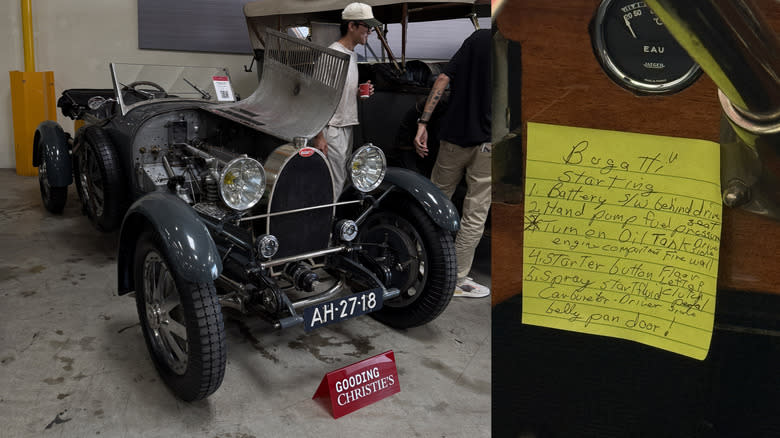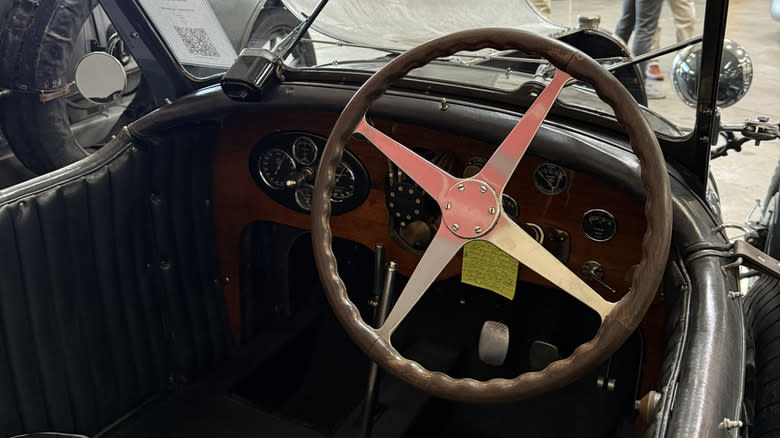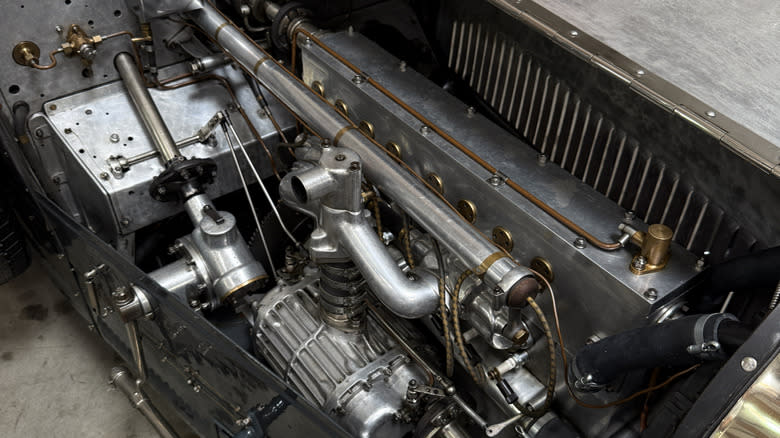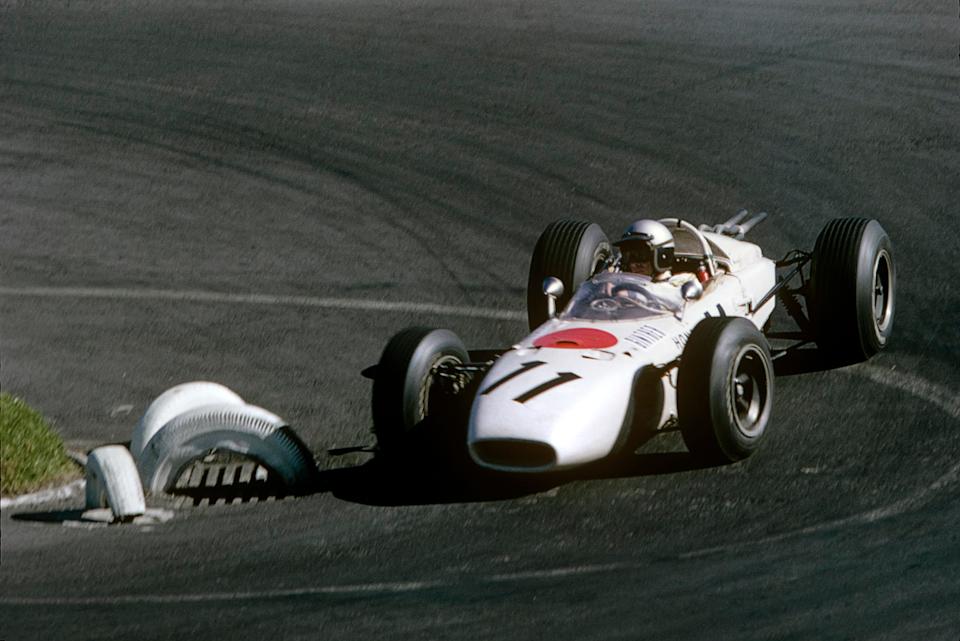
I went to Gooding Christie's preview for its upcoming Monterey Car Week auction last weekend, where a few dozen of the cars that are going across the block were on display for potential buyers (and journalists and other sorts of influencers) to check out up close. There was a lot of great variety in the warehouse, from a stupendous bronze Ferrari 250 GT SWB California Spider and an incredible blue Lamborghini 400GT to a kinda rough Lancia 037 road car and a Citroën 2CV with delivery miles.
Of course, all of my favorite cars were Bugattis. Gooding's auction includes 10 Bugattis this year, from a brand new Bolide and a 1994 EB110 Super Sport to a barn find Type 57 Ventoux and a race-winning Type 35B Grand Prix. The latter two were at last weekend's preview, along with three of the others. Sometimes these old, complicated cars have multi-stage starting sequences that you really have to get right in order to get going, as evidenced by the note stuck to the dashboard of this 1927 Bugatti Type 43 Grand Sport.
Read more: These Are The Cars Our Readers Wish Would Depreciate Faster
It's Simple

The interior of the Type 43 doesn't look that strange or different from what we're used to in other cars. There's a steering wheel, a bunch of gauges, three pedals on the floor, a gear shifter and an emergency brake. But you can't just jump in and set off immediately. As the note reads, here are the instructions for how to start this Type 43:
1. Battery s/w behind driver seat2. Hand pump fuel pressure3. Turn on oil tank, driver's side engine compartment fire wall4. Starter button - floor left of clutch pedal5. Spray start fluidThen at the end, unnumbered, it says "carburetor - driver side belly pan door!"
Easy!
Thanks to its 2.3-liter inline-8 engine, which was borrowed from the Type 35B and fitted with a Roots supercharger for a total of 120 horsepower, the Type 43 was the first production car in the world that could hit 100 mph. In fact, it could hit 112 mph, in an era where most cars could barely reach 70 mph. It also featured a four-speed manual transmission, four-wheel cable-operated drum brakes, and a shortened chassis from the Type 38 with a solid-axle front suspension with semi-elliptical leaf springs and a live rear axle with reversed quarter-elliptical leaf springs. The lightweight Grand Sport coachwork helped the Type 43 become one of the most competitive sports cars of its day.
This One Has Been Extensively Rallied

This particular Type 43 Grand Sport is the fourth one built out of around 160 ever made. Within days of arriving at the Paris Bugatti agency on May 17, 1927, which was located mere feet from the Champs Élysées, the car was sold to Maurice Lesieur, son of oil magnate Georges Lesieur — that's cooking oils and condiments, not the kind you drill the earth for. Two years later he traded it in for a Type 44, and it was then sold to a few different owners in France, where it remained until the mid-1950s. At some point it was purchased in "a disassembled but complete state," including the numbers-matching body and powertrain. It was then restored by Bugatti mechanic Henri Novo, where it may have been fitted with the Type 44 gearbox that's currently in the car (luckily identical to that of a Type 43), and it was acquired by G.L. Saccardo and kept in his collection in Schio, Italy, for the next 11 years. It spent another 12 years in Giulio Dubbini's collection in Padua, then sold to David Heimann, who had it in England until 1985 when he sold it to Silicon Valley venture capitalist Tom Perkins.
Described by Gooding as being "one of the most important automobile collectors of the 20th century, Perkins' cars were all supercharged, and he kept the car in England to use in rallies. In 1989 Perkins sold the Type 43 to French collector and Schlumberger heir Michel Seydoux, who sold it to German collector Peter Groh in 1997. The car underwent a two-year restoration by Feierabend, and it was then sold to Dutchman Jan Smits, who owned it for 20 years and "entered it in numerous international Bugatti rallies."
The current American owner bought the Type 43 in 2019 and had the engine rebuilt by Dutch Bugatti specialist Simon Klopper. It was also repainted from blue to a period-correct gray, but the mildly patina'd interior was left alone. Aside from the boot lid, fenders and lower tail panels the body is said to be all original, and as Gooding says, "it possesses a wonderful character due to the original tail and scuttle being sanded and painted rather than over-restoring the shape to a final finish that does not resemble what rolled out of Molsheim in 1927." It s original engine, frame, rear axle and supercharger are all intact, and since all of that work the Type 43 was taken on a bunch of European tours.
Type 43s don't go up for auction very often, so this is a rare opportunity to pick up one of Bugatti's most iconic models, and Gooding says "this superb example is ready to continue its extensive, 55-year history of road rallying with its next fortunate custodian." The auction house has placed an estimate of $1,500,000-$2,250,000 when it goes up for auction in Pebble Beach next week.
Want more like this? Join the Jalopnik newsletter to get the latest auto news sent straight to your inbox...
Read the original article on Jalopnik.








Comments